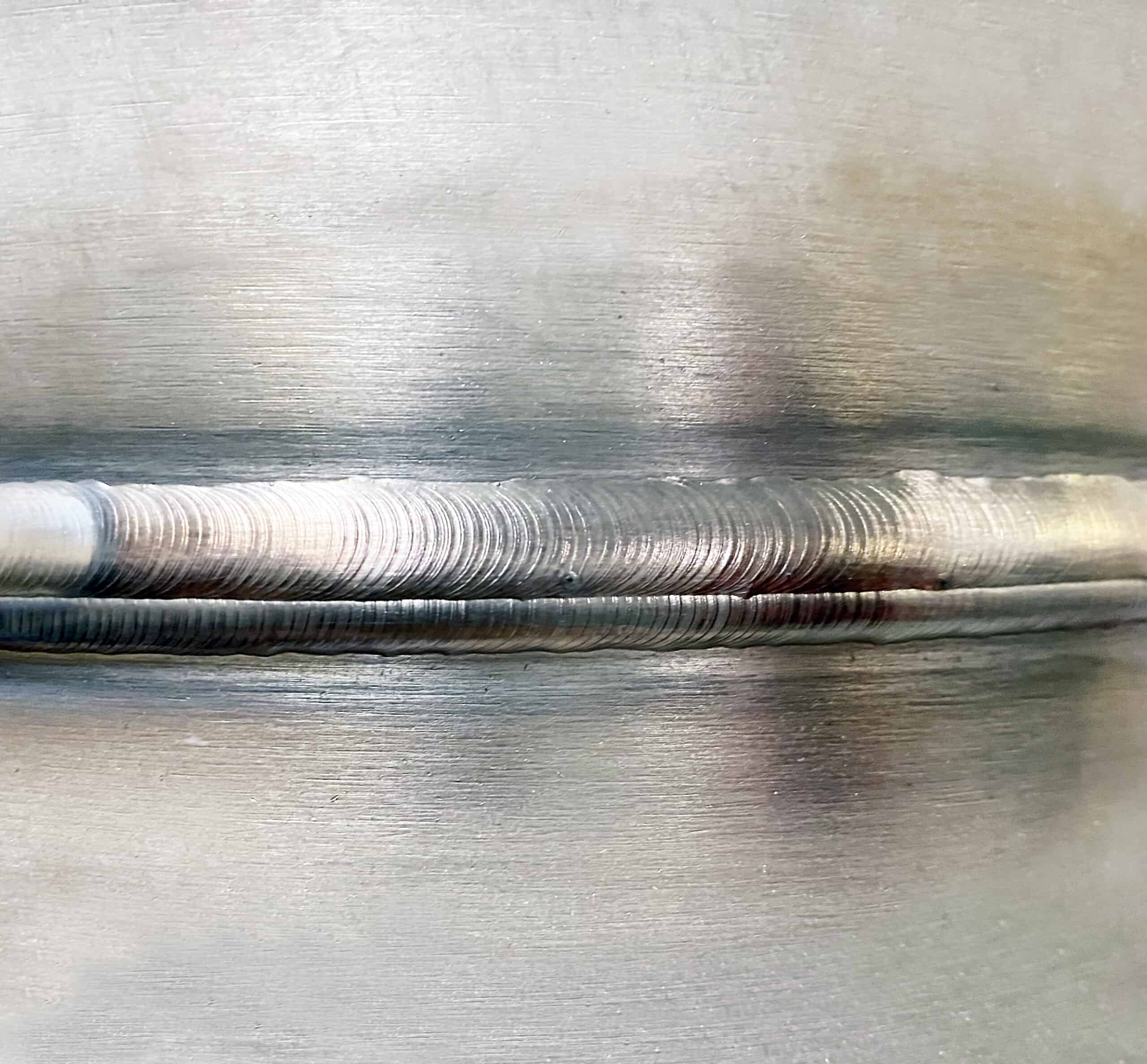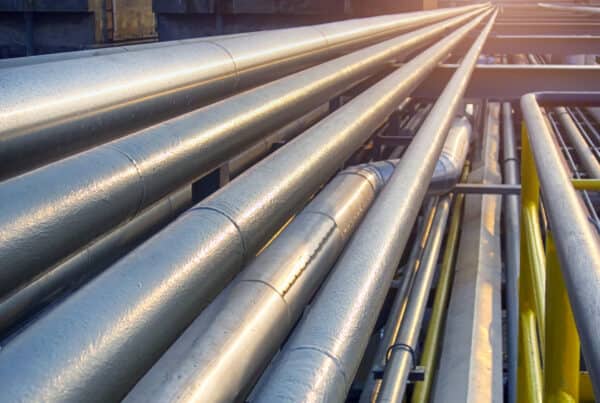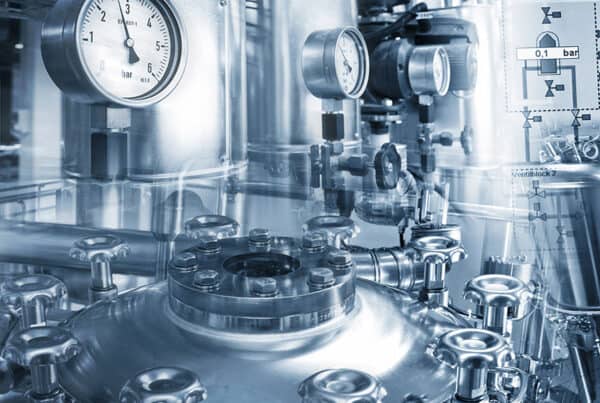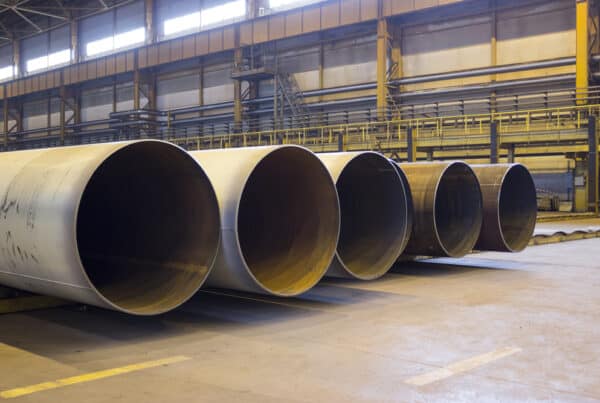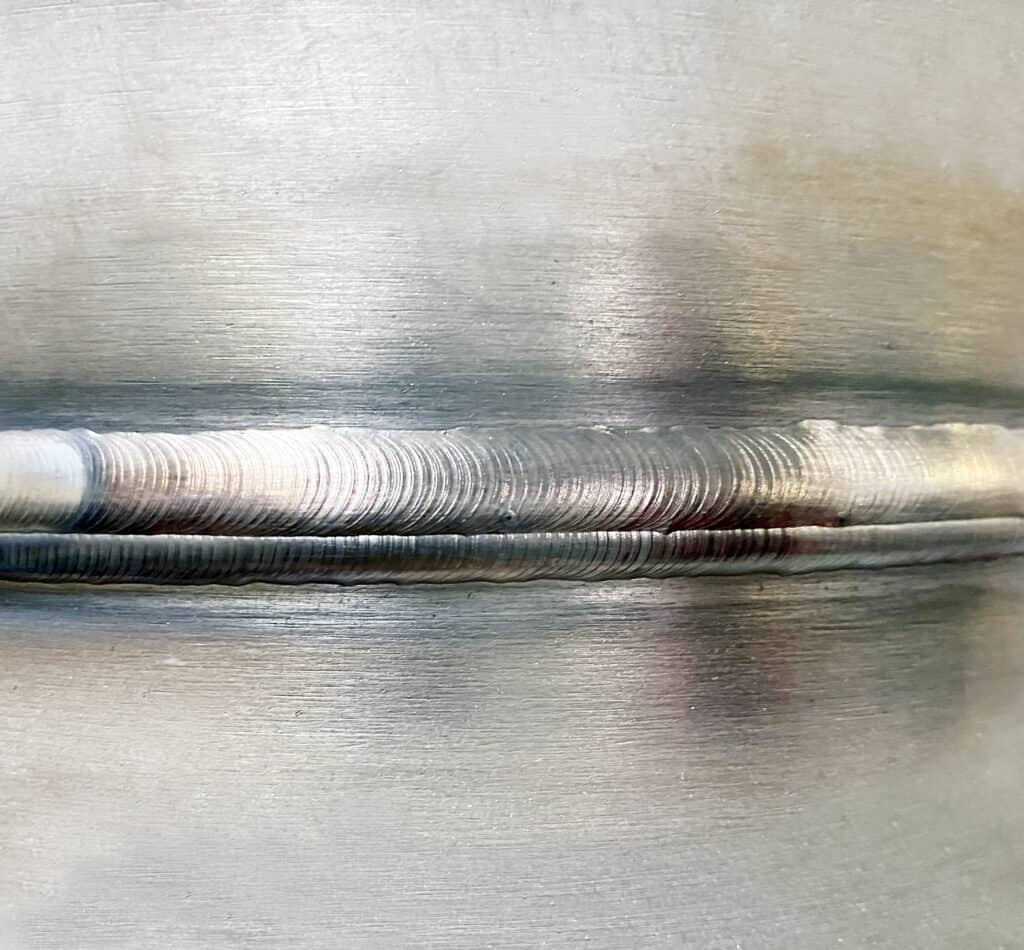
A high-purity weld is any weld that contains fewer than ten parts per million (ppm) of contaminants like oxygen, hydrogen, and carbon. Ultra-high-purity welding keeps these contaminants below one ppm. High-purity and ultra-high-purity pipe welding are used in processes where cleanliness of the product is paramount, such as in semiconductor or biopharmaceutical process piping. It is also used where weld strength and reliability requirements are higher than what can usually be obtained—aerospace applications are one example of this type of use. High-purity pipe welding is also used when both cleanliness and strength are needed, as in power plant pressure vessels and heat exchangers.
A contamination level of less than ten parts-per-million is well below what can usually be obtained welding in a typical atmospheric environment. This means that high-purity welds of any sort take place either in a vacuum chamber, submerged beneath a shielding medium, or underneath an inert gas shield. Typically, the very last of these—inert gas shielding—is used. Two gas-shielded arc welding processes are in common use: wire-fed gas metal arc welding (GMAW) and gas tungsten arc welding (GTAW). GTAW, also known as tungsten inert gas (TIG) welding, is the welding process of choice for high-purity and ultra-high-purity pipe welding due to the combination of weld cleanliness and arc control that the process offers.
Why Use Orbital GTAW for High-Purity Pipe Welding?
One of GTAW’s great advantages is the purity of the welds it creates due to its use of shielding gas. The other is that the process’ use of non-consumable tungsten electrodes allows for incredibly precise control over the arc. The choice of tungsten grind angle for this electrode allows the user a high degree of control over the arc’s geometry and how its heat is dispersed over and through the joint during welding. This allows the welder to control penetration and the width of the heat-affected zone. These factors contribute to welds that are not only pure, but also precise and strong.
However, the purity and level of control GTAW offers is also the source of its major disadvantages:
- GTAW is a challenging process. The welder has to actively control all of the welding parameters during the welding process. This requires careful attention, experience, and skill, and even small mistakes can contaminate a weld.
- Qualified GTAW welders are difficult to find. GTAW welding is notoriously hard to learn and there are relatively few qualified, experienced GTAW welders.
- GTAW requires space for the welder to maneuver. Welding in inaccessible or hard-to-reach areas is difficult even for those who have mastered GTAW, and greatly increases the chances of weld contamination.
Orbital GTAW welding was developed specifically to address these issues. The process is well-suited for high-purity pipe welding because it keeps the many elements of GTAW welding under control, leaving the welder free to focus on making slight adjustments through a remote weld pendant to ensure the weld proceeds correctly. It also enables TIG welding of pipe or tube without the need to stop and change positions in order to weld the entire circumference, as in manual welding. Since an orbital weld head clamps directly to the pipe, orbital GTAW can be used in enclosed and inaccessible spaces, which is where much high-purity pipe welding takes place.
How to Weld High-Purity and Ultra-High-Purity Piping
The majority of high-purity pipe welding involves stainless steel process piping for the food, pharmaceutical, and semiconductor industries. This piping is usually electropolished, either before or after welding, and sometimes both. In these industries, the electropolishing process involves immersing parts in an electrically charged bath, which removes iron from the surface of the stainless steel piece, leaving behind the more corrosion-resistant chromium and nickel on the stainless steel surface. A pipe’s interior can be electropolished after welding by filling the interior volume of the pipe with the electropolishing solution. This and other welding prep work is key in high-purity pipe welding.
At a minimum, high-purity pipe welding should involve the following preparation:
- The work area must be clean. There must not be any excessive dust, dirt, petroleum products, or spills in the work environment.
- Personal protective equipment must be scrupulously clean. The welder’s gloves, apron, clothing, and even skin should be free of dirt and old oil stains.
- The workpiece must be free of any dirt, dust, hydrocarbons, or solvents. If a workpiece needs to be cleaned, it should be wiped thoroughly with isopropyl alcohol and allowed to dry before welding commences.
High-purity pipe welds must be pure on the exterior and the interior of the pipe. This means that the volume of the pipe must be filled with an inert purge gas like argon to drive out the oxygen-rich atmosphere. New welding machine technology like an oxygen sensor can help ensure that the interior atmosphere is fully replaced with shielding gas before welding begins. The interior volume should reach the designated pressure and be able to sustain that pressure throughout the process.
In essence, high-purity pipe welding is the art of reducing the weld’s potential exposure to contaminants.
The actual welding process for high-purity pipe will vary since welding parameters vary based on the exact characteristics of the metal being welded and the type of weld being performed. However, in general, arc length should be kept short to reduce exposure to potential contaminants. The size of the weld should also be kept small for the same reasons.
In essence, high-purity pipe welding is the art of reducing the weld’s potential exposure to contaminants. Keeping the work area and workpiece clean is a large part of reducing contaminant exposure. Proper joint preparation also helps ensure a clean weld. During the actual welding process, the use of orbital GTAW limits the potential for the molten weld to become contaminated and creates a strong, reliable, and precise weld, making it well-suited for high-purity applications.
Arc Machines, Inc. is a long-time leader in providing reliable orbital weld heads and power supplies. Contact sales@arcmachines.com. For service inquiries, contact service@arcmachines.com. Arc Machines welcomes the opportunity to discuss your specific needs. Contact us to learn more.

